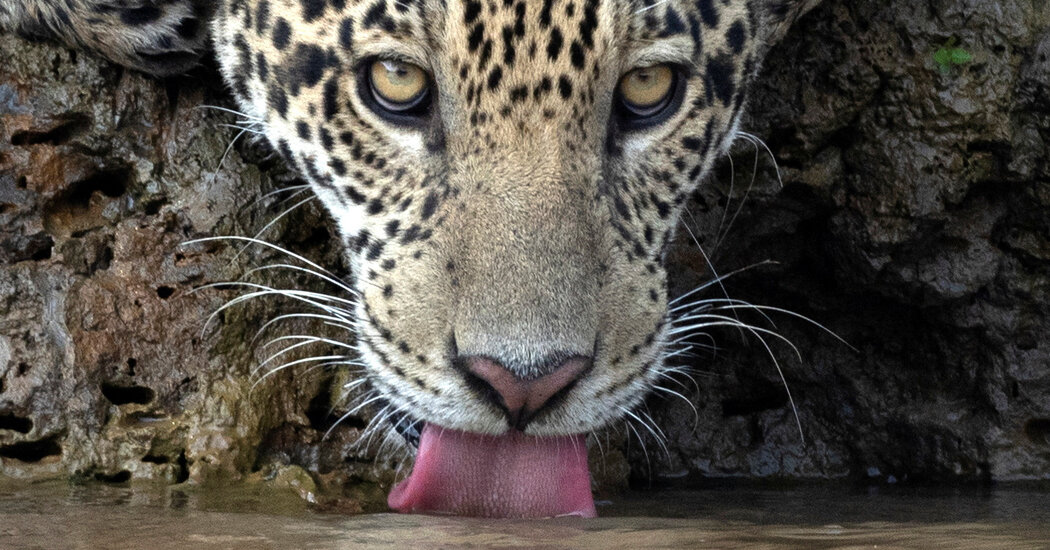I was prepared to wait, to soak up the magical morning light as our small motorboat traveled up the Rio São Lourenço in the Pantanal, Brazil’s vast wetlands. A tangle of lianas, acuri palms and strangler figs pressed close along the riverbank. I stared into the forest, scanning for movement, for shadows, for a jaguar. But it was too soon.
Patience in the wild is a lesson I have learned over a lifetime of travel. On an African safari, for example, it can take days to spot a cheetah or a leopard.
But in Brazil, we had been out on the river for barely half an hour when the cry went up from Gabriel, the captain: “Jaguar!”
And there he was, a magnificent male sunning himself in the reeds. I expected him to flee. But as we pulled up to the riverbank, he remained watchful but inscrutable, giving no sign of being disturbed. Farther upriver, we happened upon a female jaguar with her cub. As they walked along the riverbank, the cub eyed us suspiciously, but for the mother it was as if we were not even there.
Close to the center of Brazil, the Pantanal begins south of the city of Cuiabá. From there to tiny Porto Jofre (about 160 miles), the MT-060 and the unpaved Transpantaneira Highway unfurl across the world’s largest wetlands, passing savanna and forest, ranches and eco-lodges.
At Porto Jofre, the highway ends and motorboats take over, with guides and local captains, many with their own Instagram accounts, ready to take you upriver to look for jaguars.
It was late November, the end of the dry season, when I arrived, and Porto Jofre was barely a pinprick of human presence, with a handful of lodges, camps and houses surrounded by rainforest. Families of capybara, the world’s largest rodent, had taken over the airstrip. Hyacinth macaws screeched overhead.
Over the days that followed, I would wake before dawn in the simple, palm-shaded surroundings of the Jaguar Camp, run by my guide, Ailton Lara, and we would head down to the riverbank, where each sultry morning, with rain on the near horizon, a few fishermen cleaned their morning catch. The flotilla of tourist boats during the June-to-September high season was already a distant memory.
But even on these quiet mornings, there were still boats setting out with visitors, heading as far as 60 miles upstream in their search for jaguars. They usually don’t have to travel that far, finding what they’re looking for in the Encontro Das Águas (Meeting of the Waters) State Park, less than an hour upriver from…
Click Here to Read the Full Original Article at NYT > Travel…
